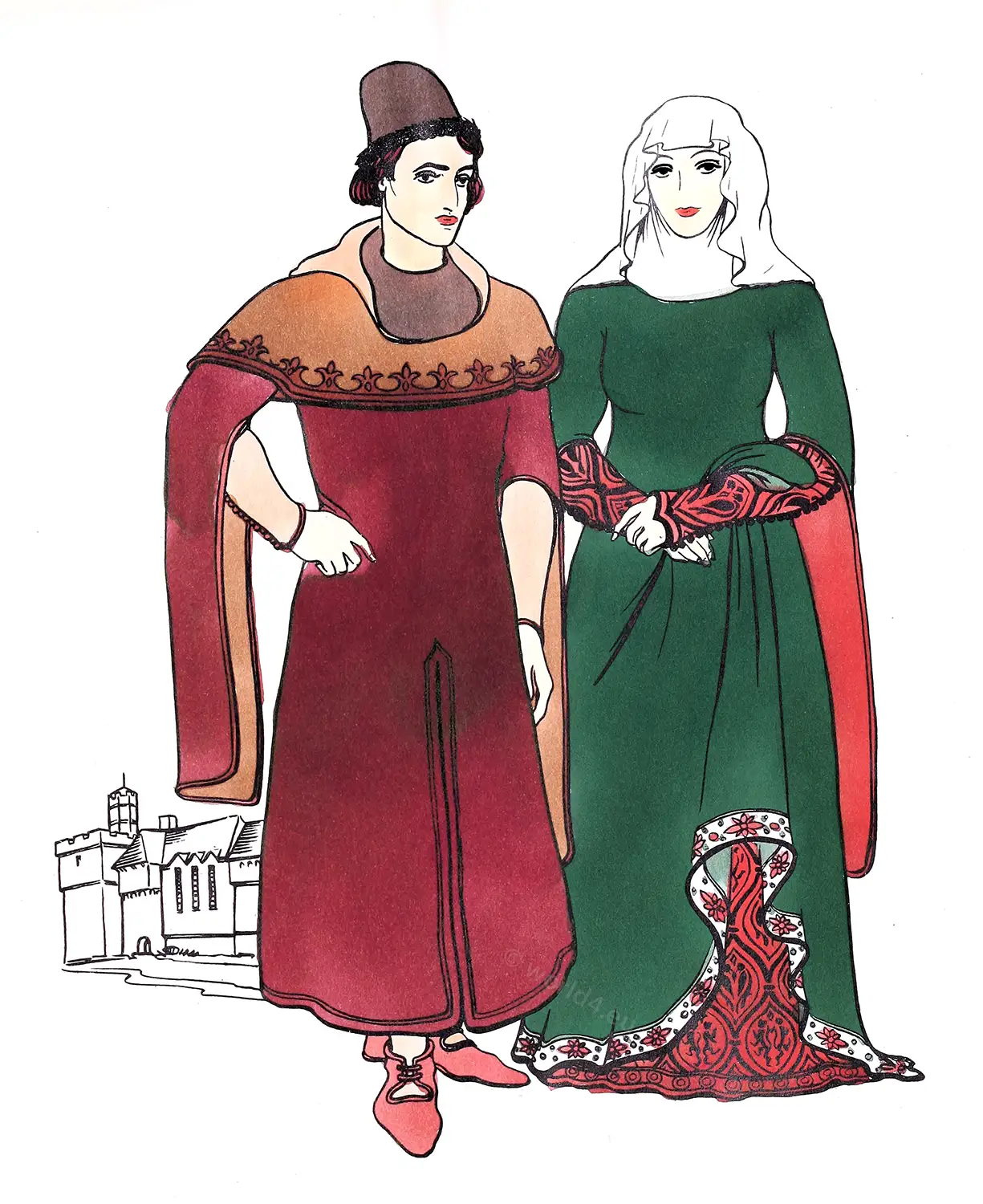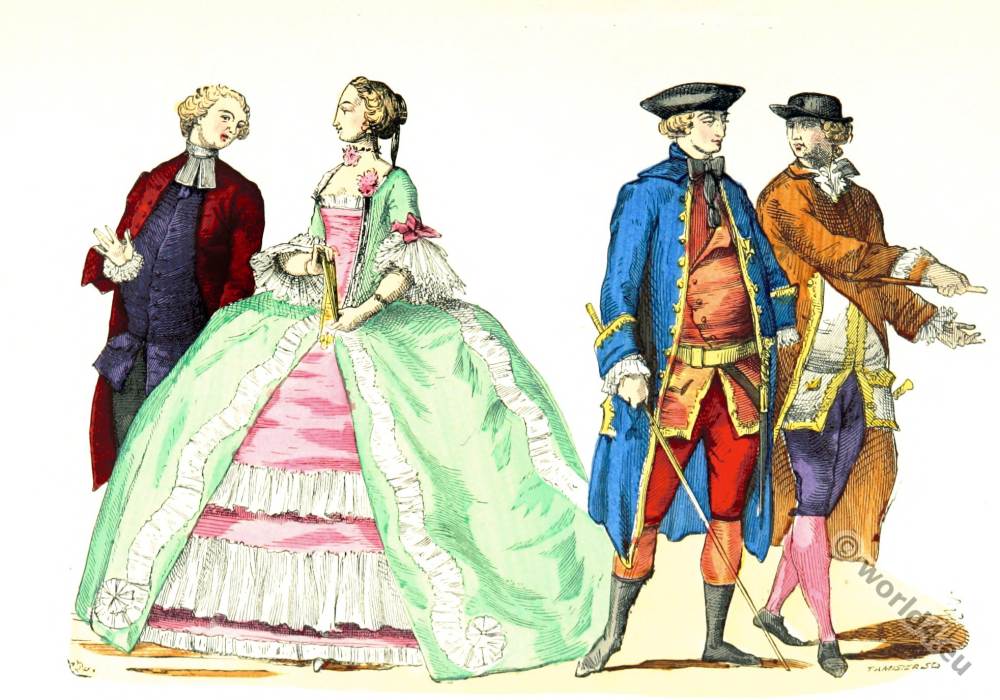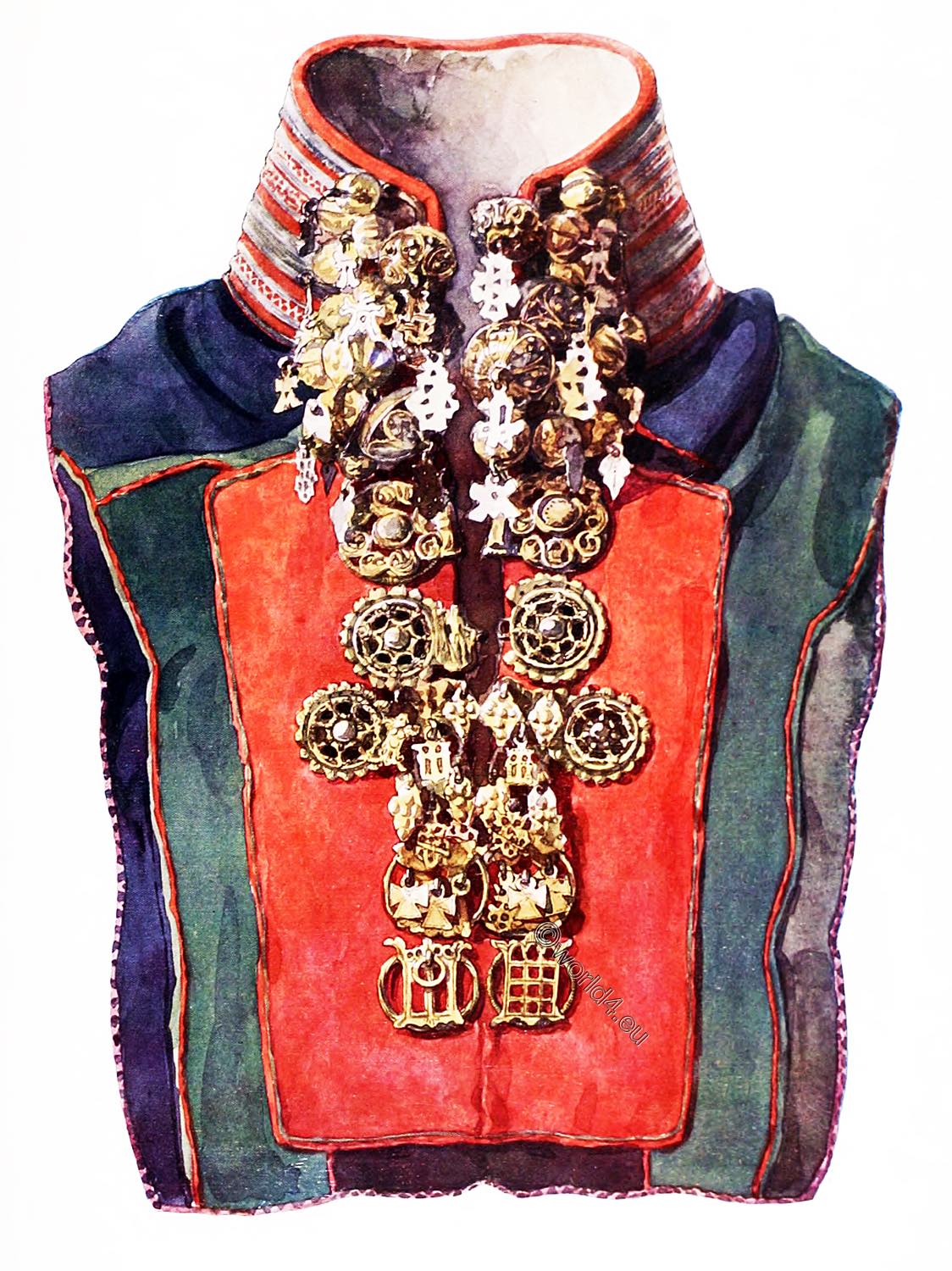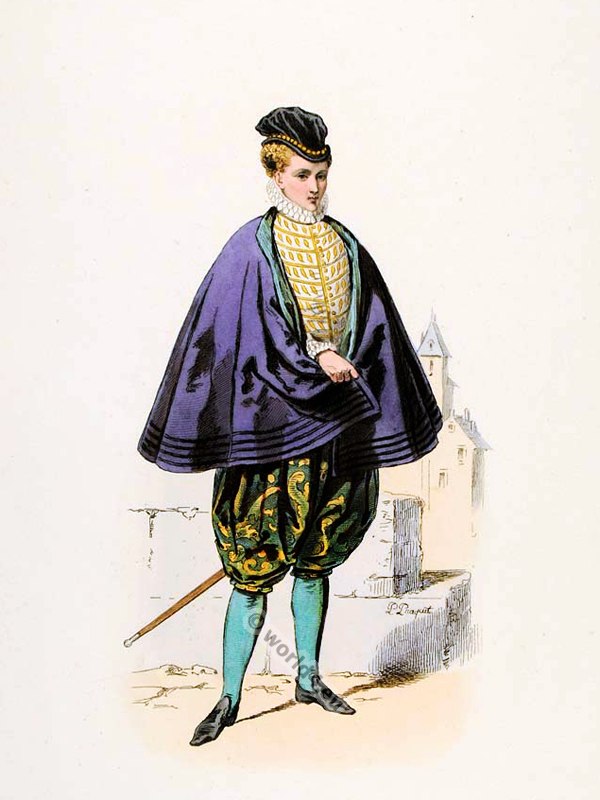LATE MIDDLE AGES. FOURTEENTH CENTURY
1300 A.D. – 1400 A.D.
PLATE 25
People of the fourteenth century
The dress of the people of the fourteenth century is probably more familiar to most of us than that of the majority of periods, because it is in these costumes that Cinderella and her Prince Charming and all the fairy tale folks are represented.
The period is one of lavish use of color. The people wore on their dress the brilliant jewel-like colours they used so beautifully in the tall arched stained glass windows of their cathedrals. Common people wore more simple and less colourful forms of the gay hued garments of the gentlefolk.
The main garment of the early part of this century was worn, in slightly different forms, by both the men and the women. It was called by the French name “cotehardie”. Due to the improved methods of weaving materials, the fabrics were much finer than in the previous century and the cotehardies was a very graceful, unusually becoming dress.
The cotehardie hugged the body tightly to the waist, then fell in a loose long skirt. The women’s skirts were invariably long, while the men wore them any where from knee to ankle length. The sleeves covered the upper arm tightly to the elbow, then fell in a loose unclosed sleeve which revealed the long, fitted, buttoned sleeve of the under-tunic. The garment was generally worn unbelted.
The lady on our plate is wearing a long green woollen cotehardie with an embroidered border on the hem. She is lifting it to show her under-tunic of elaborate brocade which also shows as an under-sleeve. Moat probably the rest of the undergarment, which is not likely ever to show, is of a plainer, less costly material. Her long sleeve ends are lined with silken material of a contrasting color.
As was proper for a married woman she has covered her head and throat with a white linen gorget and wimple. The gorget and wimple might be made of two pieces of linen or one large piece folded so as to look as it does here. The gorget is that part that covers the neck and shoulders. It is probably fastened to the hair over each ear. Its name comes from the French word gorge which means throat. The wimple is merely a veil that is worn exactly as shown here on this middle class woman.
This headdress has survived until the present time in the costumes of the nuns — many orders of which were started at this time. It was considered immodest for anyone but very young girls to leave the head uncovered, and arrangements like the gorget and wimple were worn by most matrons.
The man in the dark red cotehardie which is slit up the front is wearing a short cape to which has been attached a hood. In cold or rainy weather he may pull the hood up and wear it either over or under his felt fur-trimmed hat. His under-tunic of light brown homespun shoves only an under-sleeve, though it is a full length garment, – worn for warmth.
Although most of the men were clean-shaven luring this period, a short beard and moustache were sometimes worn. The hair was cut off about the jaw-line, more for convenience sake then as a matter of styles later in the period it was worn longer, and usually curled. The man here, very likely a well-to-do merchant, is wearing soft, simple, leather shoes with pointed toes. Later this point became more and more exaggerated. The shoes are often fur-lined.
Source: Museum Extension Project. History of Costume.
Discover more from World4 Costume Culture History
Subscribe to get the latest posts sent to your email.







